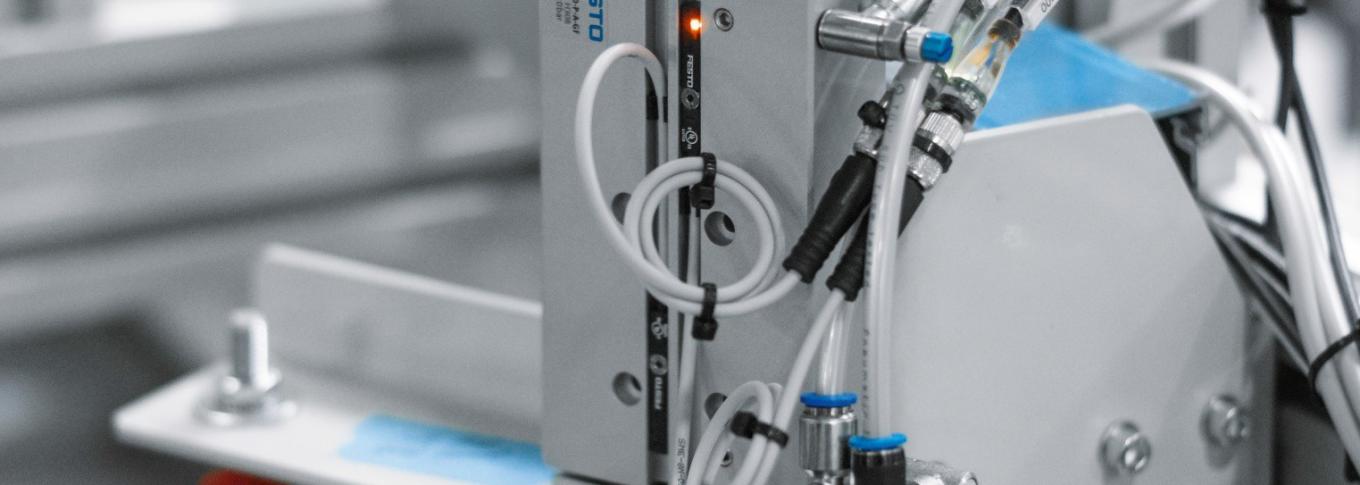
Solve machine setting issues using the latest cylinder sensor technology
The latest technological advances in solid-state cylinder technology enable maintenance or service engineers to solve multiple pneumatic or electric drive issues with a single device, according to industrial automation specialists Festo.
Modern automation machinery uses positional feedback to trigger sequential movements. In pneumatic applications, this takes the form of cylinder sensors that detect the position of the piston within the actuator. Similarly, the sensors act as movement reference points in electric axes and prevent clashes or over-runs.
“Solid-state switches are today's default technology option,” says Steve Sands, Head of Product Management at Festo GB. “Their absence of moving, mechanical components gives them a long lifespan, with mean time between failure (MTBF) of more than 4000 years. This means solid-state switches are the technology of choice over traditional reed switches in around 90% of pneumatic and electric drive applications.”
Solid-state sensors are typically constructed with four magneto resistive sensors connected in a Wheatstone Bridge. When the cylinder piston magnet reaches the solid-state switch, the individual sensors' resistance changes, altering the bridge voltage. After amplification and processing, this creates an output signal from the solid-state sensor. As a result, solid-state sensors are protected against overload, reverse polarity and short circuits. They are also immune to wear and tear and insensitive to inductive and capacitive loads. Typically, the maximum current is 100 mA, and the maximum cable length is 30 m.
The latest solid-state sensors from Festo have moved the technology on another step. The Festo SDBT-MSX incorporates Hall Effect sensors and a micro-controller that enable approximate setting of the sensor, with the actual switching point being 'self-taught' by cycling the actuator a few times. This means that the actuator is driven to its end positions and the sensor learns the required switching point. Adopting this technology saves set-up and commissioning times and means a person doesn't have to enter inside the machinery whilst the power is on, reducing risk.
Incorporating a micro-controller also means that the sensor’s functions – NPN or PNP switching, Normally Open or Normally Closed switching, or output signal duration – can be modified easily: meaning maintenance or service engineers can solve multiple issues with a single device.
More information about Festo’s cylinder switch range can be found here: www.festo.co.uk/cylinderswitch
About Festo
Festo is a leading international supplier of automation technology with a turnover in 2024 of around €3.45 billion. Festo employs over 20,000 people worldwide and is a proven innovator and problem solver in pneumatic and electrical automation, where it is the performance leader. Festo offers around 36,000 pneumatic and electric products in hundreds of thousands of variants for factory and process automation technology, many of which can be tailored to specific customer needs. Sustainability, reducing its CO2 footprint, digital learning, innovation, performance and speed are the key drivers for the company's future. Festo GB operates as a carbon neutral organisation and uses the PAS 2060 standard externally audited by NQA to validate this claim to customers, employees and other stakeholders.
Festo Industrial Automation's innovative strength is demonstrated through the launch of around 100 new products every year. The company invests over 8.5% of its turnover in R&D, resulting in over 2,600 patents held worldwide. For more information about the company's products and UK / Irish services, please visit: www.festo.com/gb and www.festo.com/ie
Festo and Industry 4.0 - Festo has engaged with the Industry 4.0 initiative from its inception: as a user, manufacturer and trainer. As a member of the steering group, the company has taken an active role in defining the core standards such as the RAMI model and the Administration Shell. Festo Didactic has installed Industry 4.0 Cyber-Physical Factory training hardware systems in many leading universities and training centres. It also provides Industry 4.0 training courses for change managers and practical workshops for employees. Industry 4.0 technologies such as OPC-UA communications are embedded in the latest generation products. For more information, go to www.festo.com/digitalisation
Festo Didactic training delivers training for industry – by industry. Combining Festo's industrial heritage with its future-focused manufacturing and engineering expertise to deliver courses for greater productivity and competitiveness. Offering a wide range of open courses, structured development programmes and tailor-made, customer-specific projects on technology and Industry 4.0 and the industry-leading online training suite, Festo LX. Festo also provides state-of-the-art training equipment solutions for industrial companies and educational institutions around the world. Festo Didactic has around 56,000 education customers worldwide. More information on Festo training and consulting services can be found at: www.festo.com/didactic
Festo Bionic Learning Network encapsulates the innovative nature of Festo, raising awareness and attracting talent to the company. Exploring the links between nature and technology opens new areas of innovation and demonstrates complex ideas in a stimulating and enjoyable way. Festo works with an alliance of internal R&D, external educational establishments and specialist companies to advance bionic solutions for automation applications of the future. The objective is to benefit from bionics as a source of inspiration and to realise these in industrial automation. For more information about Festo's Bionic Learning Network, please visit: www.festo.com/bionics


